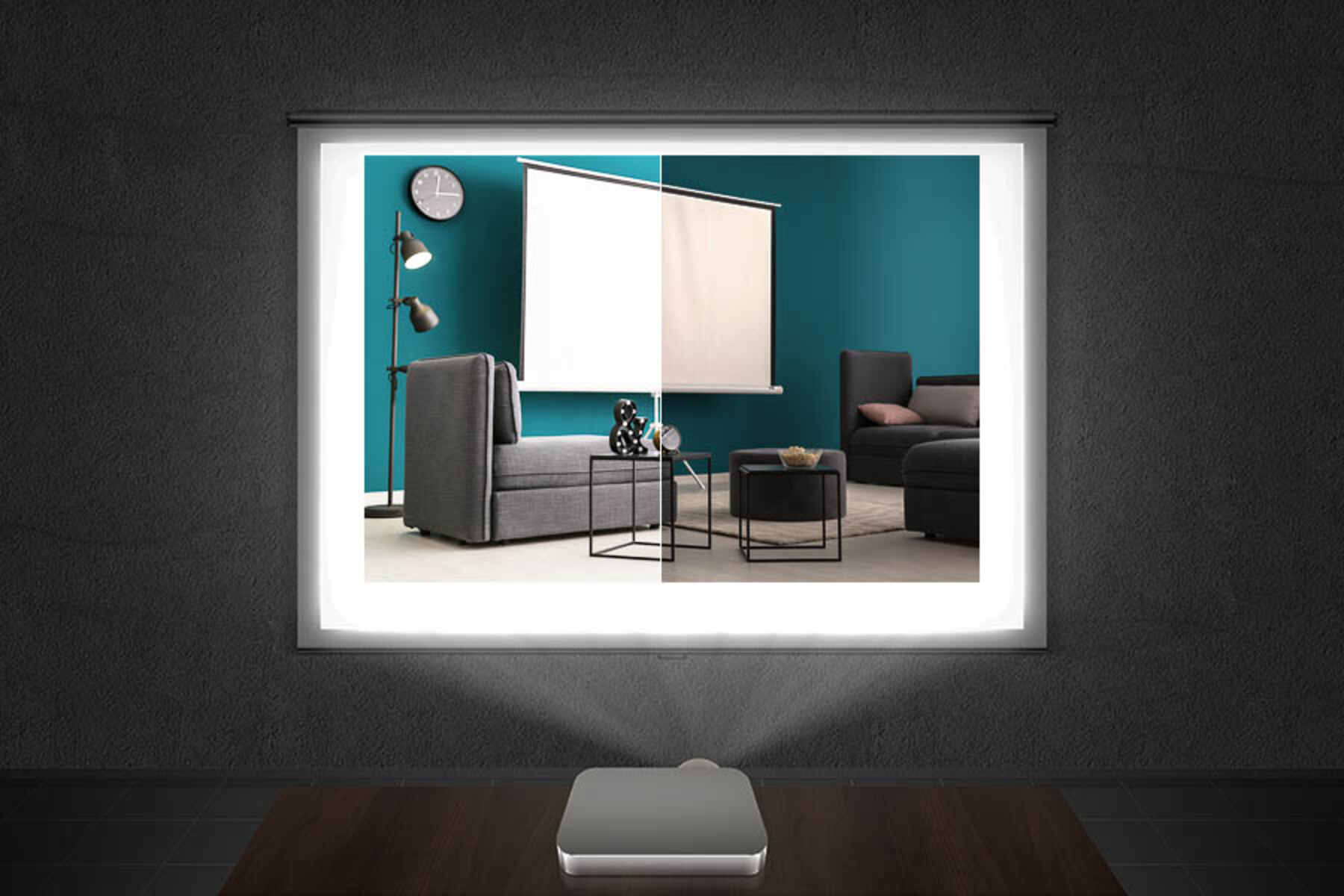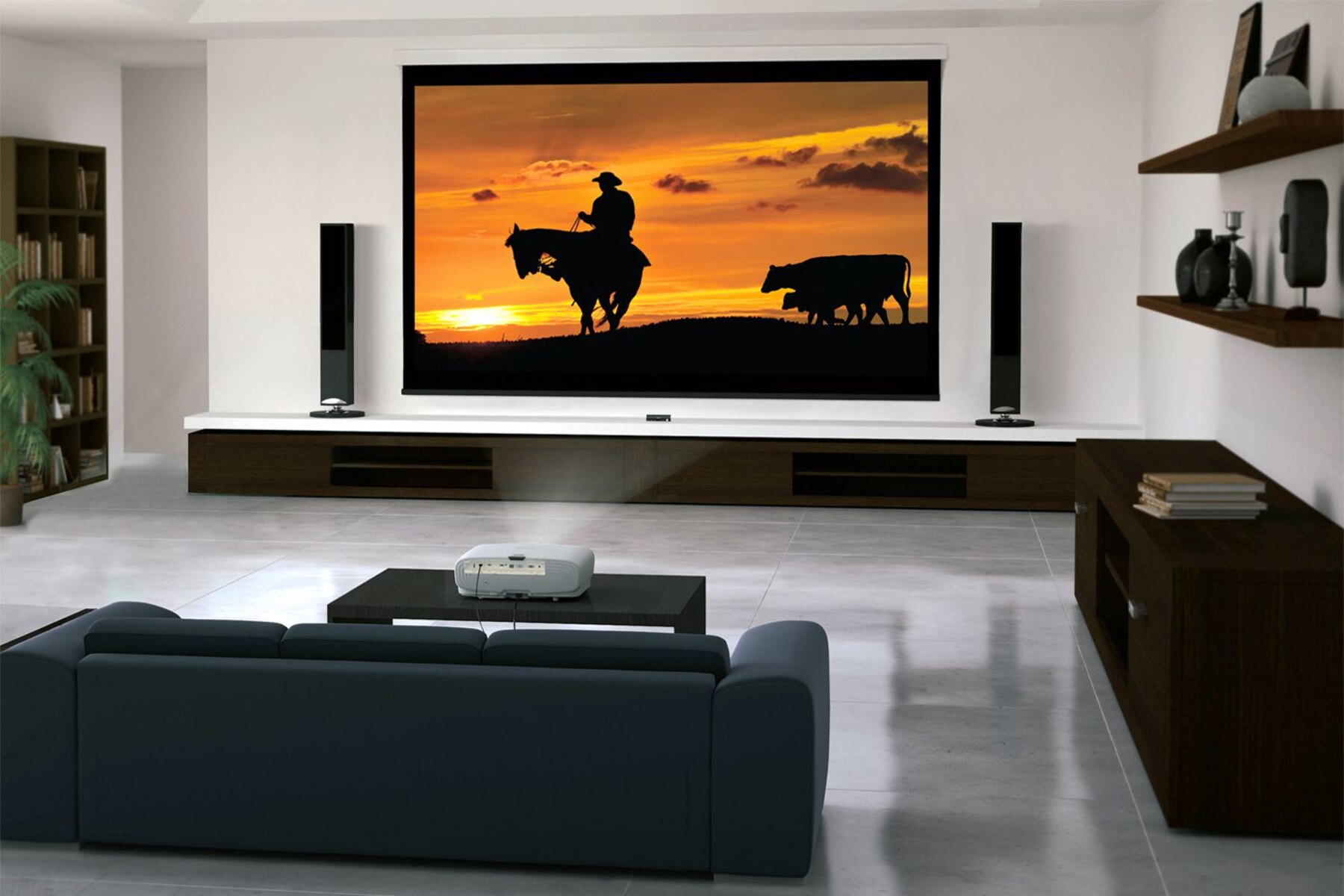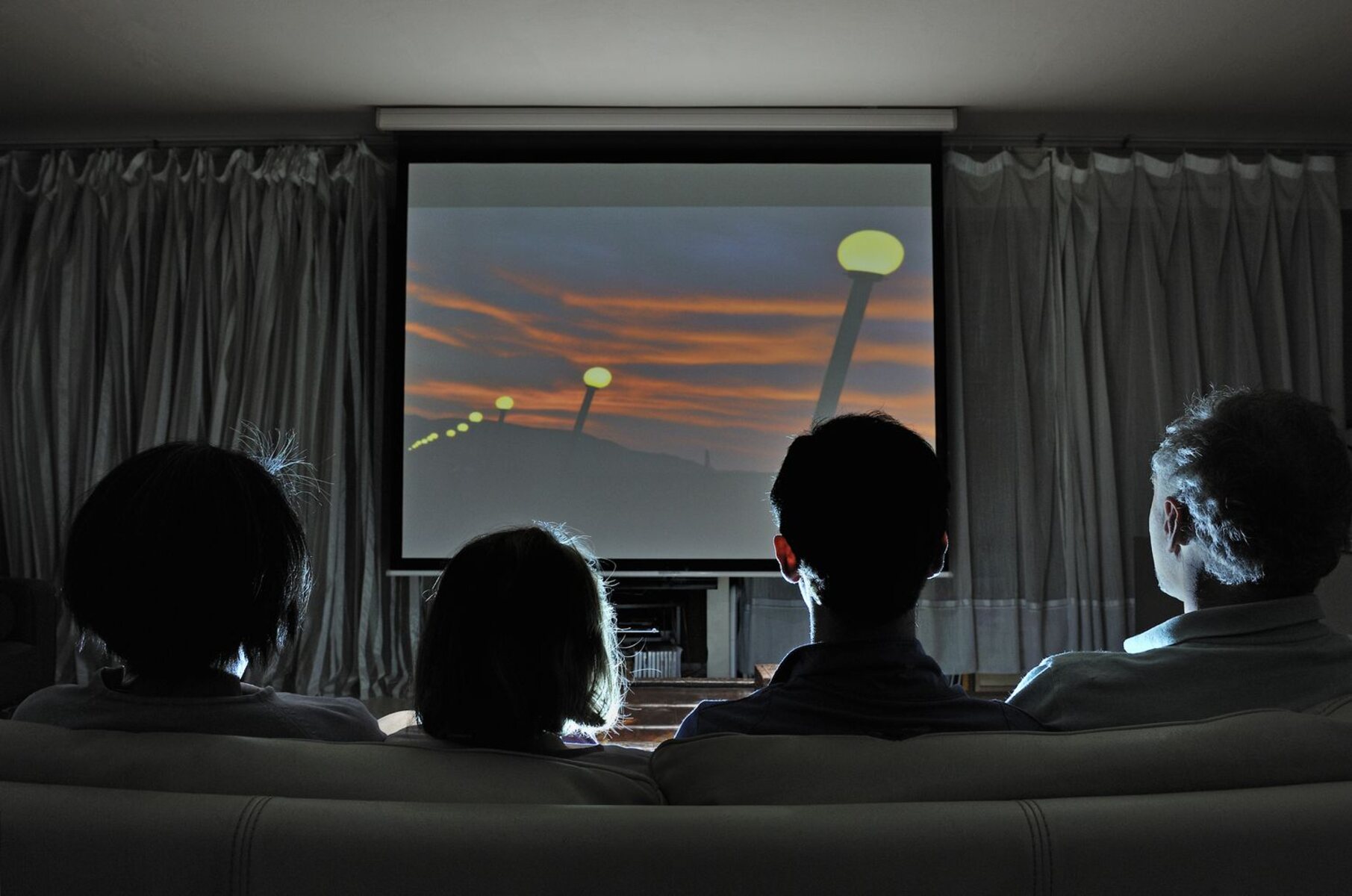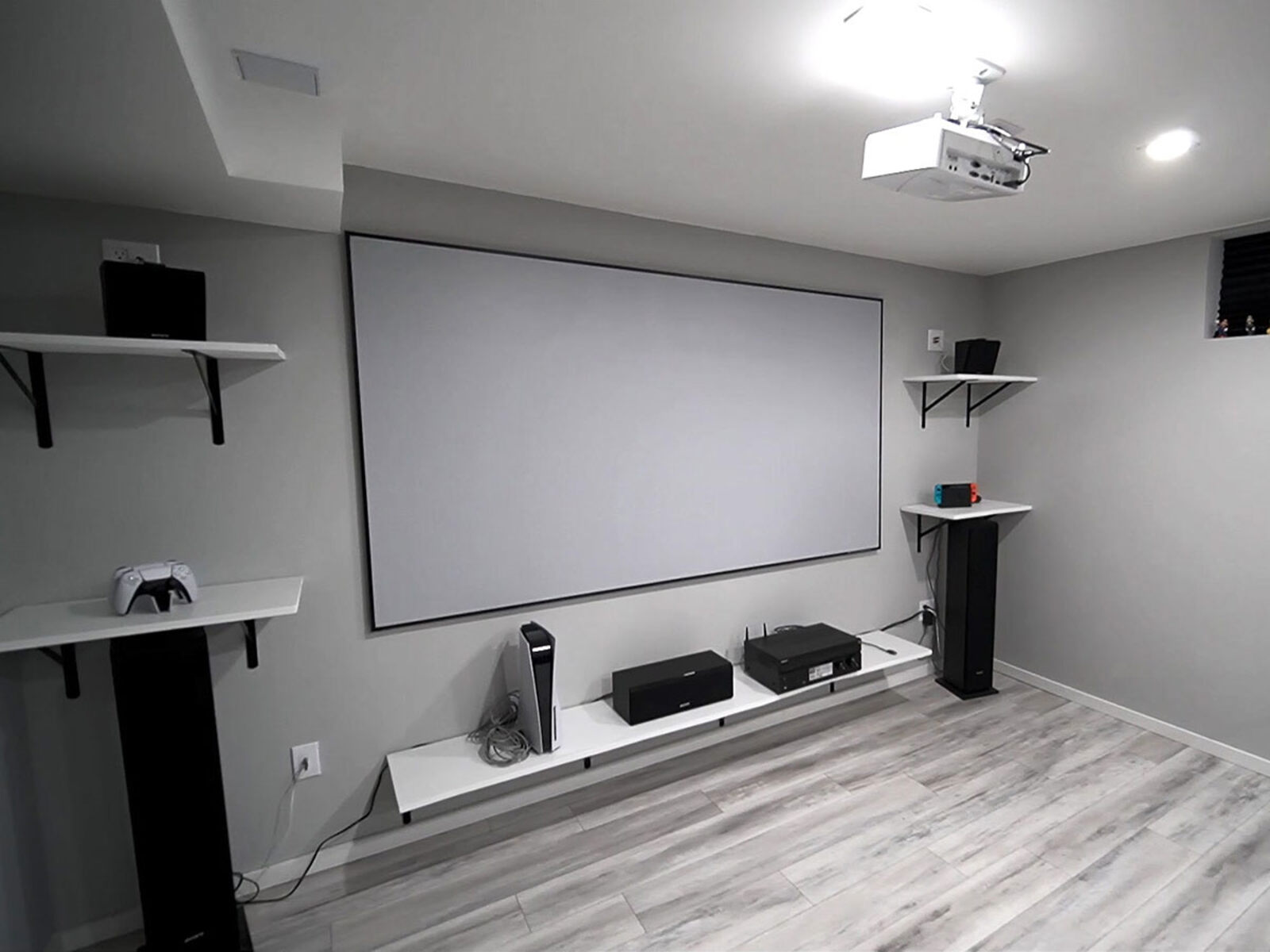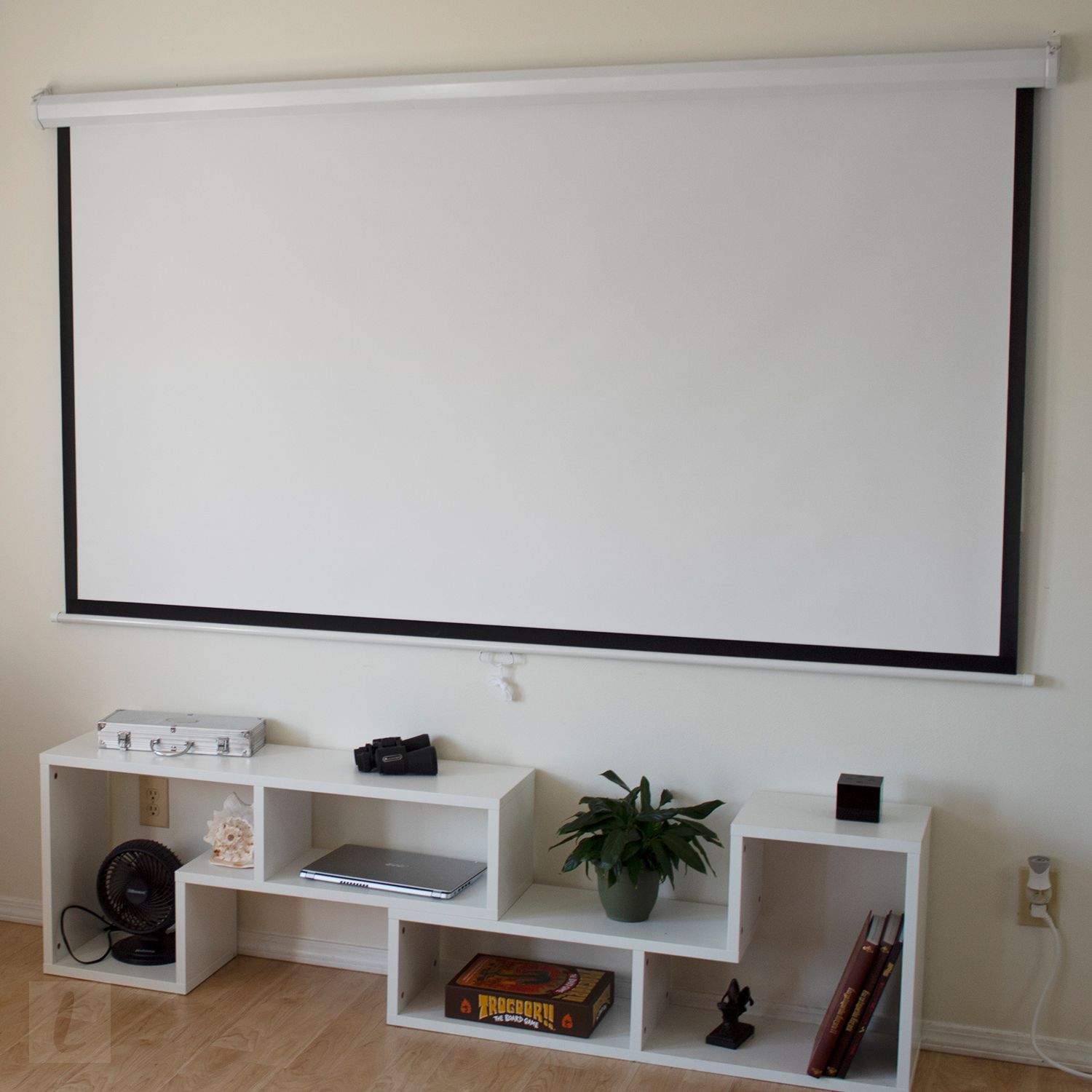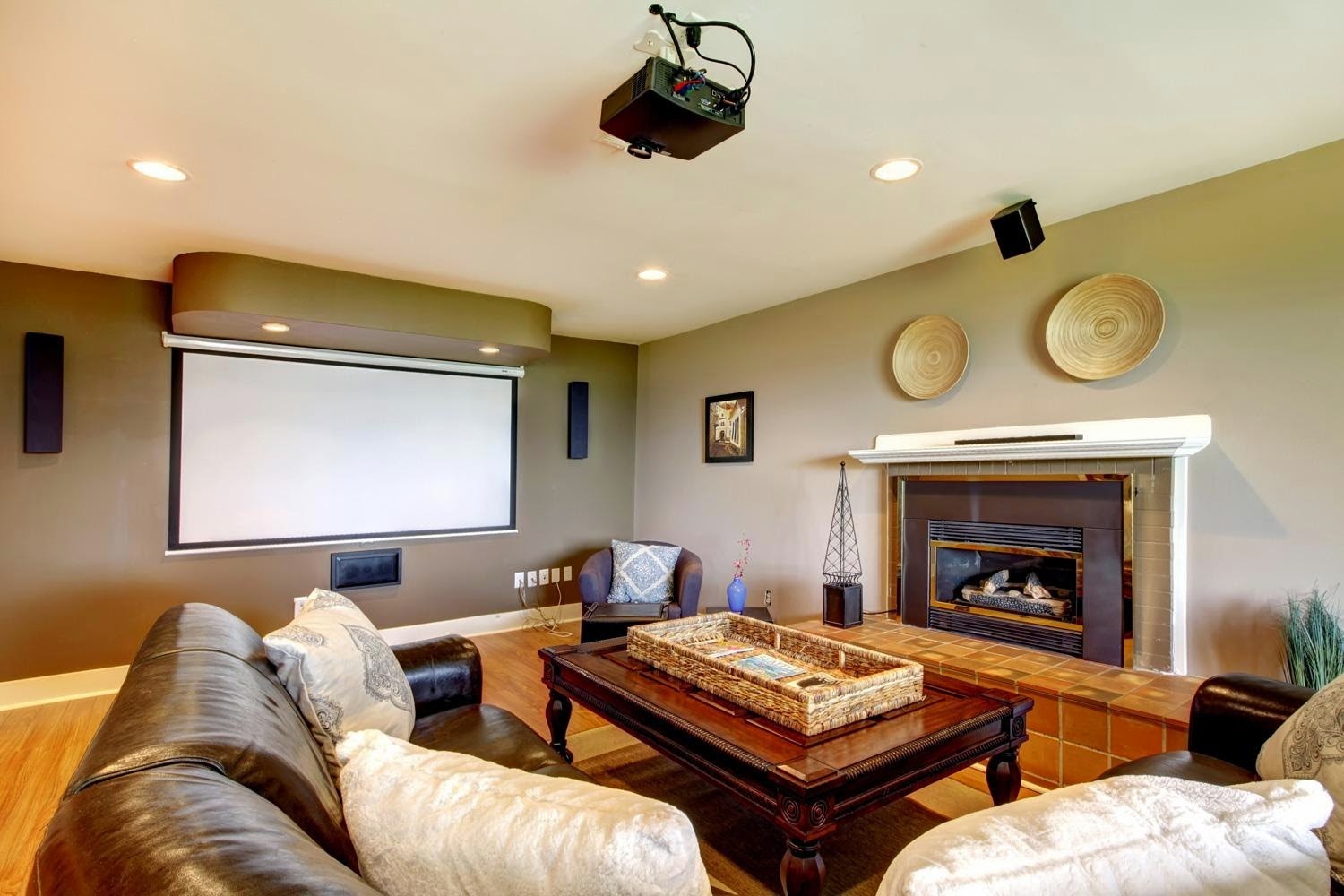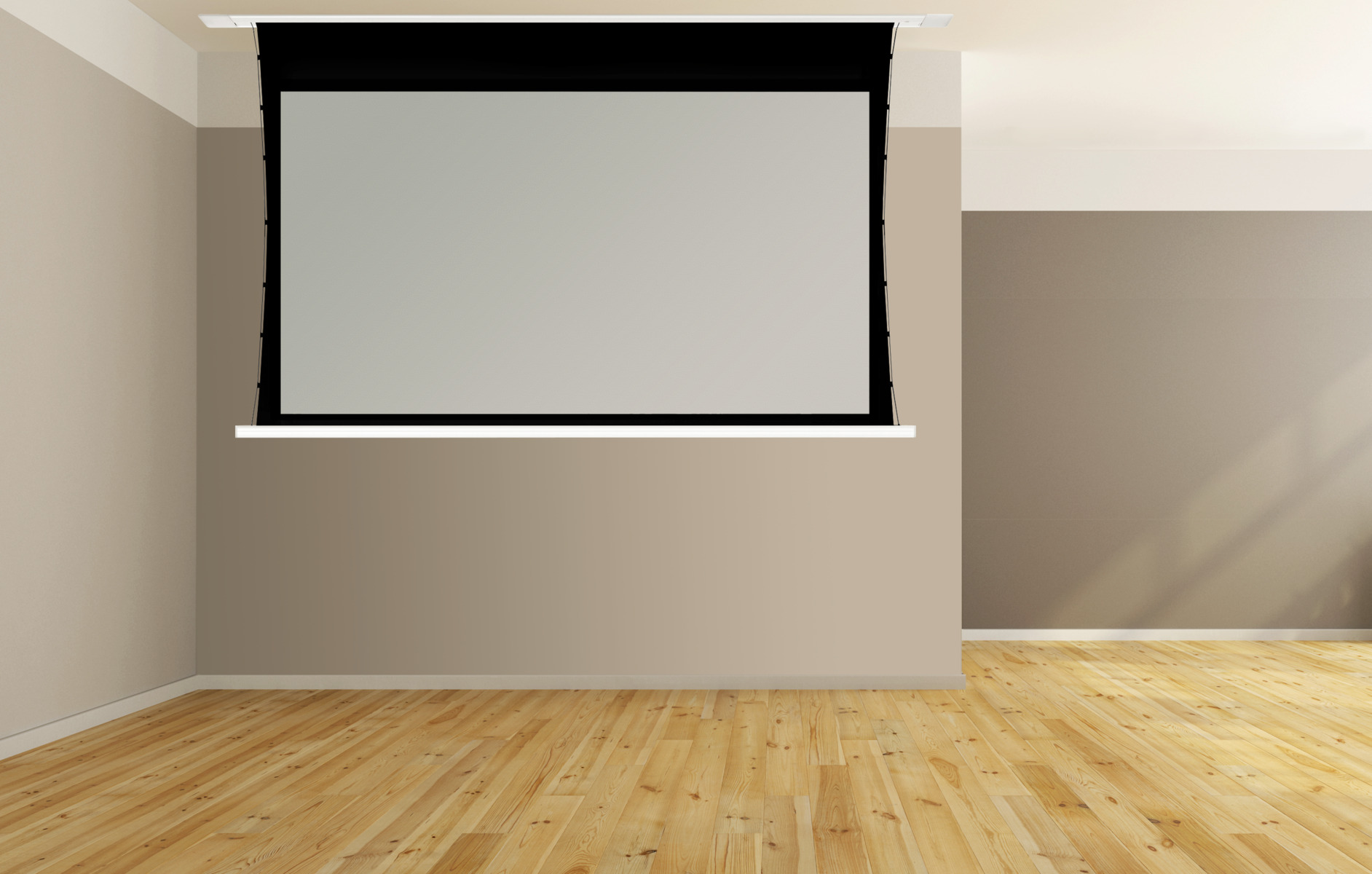Introduction
A projector screen is an essential component of any multimedia or home theater setup. It is the surface onto which the projected image is displayed, allowing viewers to enjoy high-quality visuals. One important factor to consider when choosing a projector screen is its gain.
Gain refers to the amount of light that a screen reflects back to the viewers. A screen with a higher gain value reflects more light, resulting in a brighter image. On the other hand, a screen with a lower gain value reflects less light, resulting in a dimmer image. It is important to understand the concept of gain and how it affects the viewing experience in order to make an informed decision when selecting a projector screen.
Gain plays a crucial role in optimizing the visual performance of a projector screen. Understanding how gain works and its impact on the image quality can help you choose the right screen for your specific needs and preferences. In this article, we will delve into the definition of gain, explore how it affects projector screens, discuss different gain values, and weigh the pros and cons of screens with high and low gain. Moreover, we will also cover how to measure gain and provide some guidelines that will aid you in making an educated choice.
Whether you are setting up a home theater or preparing for a professional presentation, this article will equip you with the knowledge necessary to make an informed decision when it comes to selecting a projector screen with the appropriate gain for your needs.
Definition of Gain
Gain, in the context of projector screens, refers to the measure of the screen’s ability to reflect light back towards the viewers. It is represented by a numeric value, typically ranging from 1.0 to 2.5. The gain value indicates how much brighter the image will appear on the screen compared to a standard white reference surface.
A gain value higher than 1.0 means that the screen reflects more light back to the viewers, resulting in a brighter image. For example, a screen with a gain of 1.5 will make the image 50% brighter than a standard white surface. In contrast, a gain value lower than 1.0 means that the screen reflects less light, resulting in a dimmer image compared to a standard white surface.
It is important to note that the gain value alone does not determine the overall image quality. Other factors such as projector brightness and ambient lighting conditions also play a significant role. Moreover, the gain value does not affect color accuracy or contrast ratio; it merely affects the brightness of the image.
When choosing a projector screen, it is essential to consider the gain value that best suits your specific needs and environment. A higher gain screen may be more suitable for venues with high levels of ambient light, while a lower gain screen may be more appropriate for dedicated home theaters with controlled lighting conditions.
Understanding the definition and significance of gain will help you in selecting the right projector screen that optimizes the visual experience based on your unique requirements and viewing environment.
How Gain Affects Projector Screens
The gain of a projector screen has a direct impact on the projected image’s brightness. A screen with higher gain reflects more light back to the audience, resulting in a brighter image. Conversely, a screen with lower gain reflects less light, resulting in a dimmer image.
The choice of gain depends on various factors, such as the projector’s brightness, the ambient lighting conditions, and the desired viewing experience. In environments with high ambient light, such as conference rooms or auditoriums, a screen with high gain can help combat the washout effect caused by external light sources. The increased brightness compensates for the light interference, allowing the audience to view a clear and vibrant image.
On the other hand, dedicated home theaters or controlled lighting environments often benefit from screens with lower gain. In these settings, excessive brightness can lead to eye strain and a loss of contrast. A lower gain screen helps to maintain a more balanced and natural image by reducing the reflected light’s intensity.
It is important to note that while higher gain screens improve image brightness, they may also introduce a narrower viewing angle. As the gain increases, the light is concentrated towards the central viewing position, resulting in diminished brightness when viewed from the sides. This effect, known as hotspotting, can be an important consideration for larger audiences or when multiple viewers are seated at different angles.
Conversely, screens with lower gain generally offer wider viewing angles, ensuring a more consistent image quality from various seating positions. This makes them ideal for scenarios where multiple viewers need optimal viewing experiences from different perspectives.
Overall, the gain of a projector screen has a significant influence on image brightness, viewing angles, and the suitability for different environments. By understanding how gain affects projector screens, you can make an informed decision when selecting a screen that aligns with your specific requirements and creates an immersive viewing experience.
Factors to Consider When Choosing Gain
When selecting a projector screen, there are several important factors to consider regarding gain. These factors can help you determine the ideal gain value for your specific needs, viewing environment, and equipment setup:
- Ambient Lighting: Consider the amount of ambient light present in the room where the projector screen will be used. If the room has high levels of ambient light, such as windows or bright overhead lighting, a higher gain screen may be necessary to combat the light interference and maintain image brightness.
- Projector Brightness: Take into account the brightness capabilities of your projector. If you have a projector with high brightness output, a screen with lower gain may be sufficient to achieve the desired image brightness. On the other hand, if your projector has lower brightness, a higher gain screen can help compensate for the lower light output.
- Viewing Angle: Consider the seating arrangement and the desired viewing angles. Screens with higher gain values typically have narrower viewing angles, meaning the image brightness diminishes when viewed from the sides. If you have a larger audience or require wider viewing angles, opting for a lower gain screen may be more suitable to ensure consistent image quality for viewers across different seating positions.
- Contrast Ratio: Take into account the contrast capabilities of your projector and the desired contrast ratio for your viewing experience. Higher gain screens can sometimes result in a loss of contrast, as they may reflect more light from the projection source. If contrast is a priority, a screen with lower gain can help maintain better contrast performance.
- Room Control: Consider how much control you have over the lighting conditions in the room. If you have a dedicated home theater with complete light control, you may have more flexibility in choosing a screen with lower gain. In contrast, if you have limited control over the lighting, such as in a conference room or living room, a higher gain screen may be necessary to combat ambient light and maintain image visibility.
By considering these factors, you can make an informed decision when choosing the appropriate gain for your projector screen. It is crucial to find the right balance between image brightness, viewing angles, contrast performance, and the specific requirements of your viewing environment.
Common Gain Values and Their Uses
When selecting a projector screen, it is important to understand the different gain values available and their ideal uses. Here are some common gain values and their typical use cases:
- 1.0 Gain: A screen with a gain value of 1.0 is considered a neutral or unity gain screen. It reflects light evenly, which means it maintains the same level of brightness as a standard white reference surface. 1.0 gain screens are commonly used in dedicated home theaters with controlled lighting conditions. They provide a balanced image with wide viewing angles and good color accuracy.
- 1.3 to 1.5 Gain: Screens with gain values between 1.3 and 1.5 are considered moderate gain screens. They offer a slight boost in image brightness without sacrificing too much viewing angle. These screens are often suitable for environments where moderate levels of ambient light are present, such as conference rooms or living rooms with some windows or overhead lighting.
- 1.8 to 2.5 Gain: Screens with gain values between 1.8 and 2.5 are considered high gain screens. They reflect light in a more concentrated manner, resulting in significantly brighter images. These screens are ideal for environments with high levels of ambient light that may wash out the image on lower gain screens. However, high gain screens tend to have narrower viewing angles and may exhibit hotspotting when viewed from the sides. They are commonly used in venues like auditoriums, sports bars, or large conference rooms.
It is important to note that these gain values are not definitive rules, and the ideal gain for your specific setup may vary. The choice of gain depends on factors like projector brightness, room lighting, viewing angles, and personal preferences. It is recommended to consider the specific requirements of your viewing environment and experiment with different gain values to find the optimal balance between brightness, viewing angles, and image quality.
By understanding the common gain values and their uses, you can make a more informed decision when choosing a projector screen that aligns with your specific needs and provides the desired image quality in your viewing environment.
Pros and Cons of High Gain Screens
High gain screens offer several benefits and considerations that should be weighed when selecting a projection surface. Let’s explore the pros and cons of high gain screens:
Pros:
- Increased Brightness: High gain screens are designed to reflect more light back to the viewer, resulting in a brighter image. This is especially useful in environments with high levels of ambient light where maintaining image visibility is crucial.
- Improved Contrast in Bright Environments: The increased brightness of high gain screens can help offset the washout effect caused by ambient light, enhancing the image’s contrast and making it more visible in bright environments.
- Compensate for Lower Brightness Projectors: High gain screens can help compensate for projectors with lower brightness output. They reflect more light, which can enhance the overall image brightness despite limitations in projector brightness.
Cons:
- Narrower Viewing Angle: One of the main drawbacks of high gain screens is that they tend to have narrower viewing angles. As the gain increases, the screen becomes more directional, resulting in diminished image brightness when viewed from extreme side angles.
- Hotspotting: High gain screens can exhibit hotspotting, where the center of the screen appears significantly brighter than the surrounding areas. This effect can be noticeable when viewing the screen from off-center positions.
- Potential Loss of Color Accuracy: Increasing the gain can sometimes result in a slight loss of color accuracy, especially in screens with very high gain values. Colors may appear slightly washed out or less vibrant compared to screens with lower gain.
- Less Forgiving for Imperfections: High gain screens are less forgiving when it comes to imperfections in the projection surface, such as texture or wrinkles. These imperfections can be more pronounced and visible due to the increased reflectivity of the screen.
Considering these pros and cons, it is important to assess your specific needs and viewing environment when deciding whether a high gain screen is suitable for your setup. High gain screens can be beneficial in certain situations but may have limitations that need to be considered based on the characteristics of your projector, room lighting, and desired viewing experience.
Pros and Cons of Low Gain Screens
Low gain screens offer unique advantages and considerations that should be taken into account when selecting a screen for your projection needs. Let’s explore the pros and cons of low gain screens:
Pros:
- Wide Viewing Angle: One of the main advantages of low gain screens is their wider viewing angle. They offer consistent image brightness and quality even when viewed from extreme side angles, making them suitable for larger audiences or scenarios where viewers are seated in different positions.
- Reduced Hotspotting: Low gain screens exhibit less hotspotting compared to high gain screens. The even distribution of light reflection on the screen results in a more balanced image without significant variations in brightness across different areas of the projection surface.
- Improved Contrast: Due to their lower reflectivity, low gain screens can enhance contrast performance, especially in settings where there is complete control over ambient lighting. They preserve better shadow details and offer a more nuanced image quality with improved black levels.
- Less Visible Surface Imperfections: Low gain screens are more forgiving when it comes to surface imperfections, such as texture or wrinkles. These imperfections are less noticeable on low gain surfaces compared to high gain screens, ensuring a smoother and more visually pleasing image reproduction.
Cons:
- Reduced Image Brightness: The main drawback of low gain screens is their reduced image brightness compared to high gain surfaces. In environments with high levels of ambient light, a low gain screen might not provide sufficient brightness, leading to a dimmer image that may impact the overall viewing experience.
- Less Effective in Bright Environments: Low gain screens may struggle to maintain image visibility in bright environments where there is significant ambient light. The reduced brightness can result in a washed-out appearance and reduced overall image quality.
- Dependence on Projector Brightness: Low gain screens may require projectors with higher brightness capabilities to compensate for the lower screen reflectivity. If the projector has limited brightness output, it might not be able to adequately illuminate the screen, leading to a dimmer image.
Considering these pros and cons, it is essential to assess your specific needs, viewing environment, and equipment setup to determine whether a low gain screen is suitable for your setup. Low gain screens excel in providing wide viewing angles, improved contrast, and reduced surface imperfections. However, they may come with the trade-off of reduced image brightness in environments with high ambient light.
How to Measure Gain
Measuring gain is an essential step in determining the reflective properties of a projector screen. While there are professional equipment and methods available for precise gain measurements, there are also simpler ways that can provide a rough estimate of the gain value:
1. Light Meter Method:
This method involves measuring the brightness of the projected image on the screen and comparing it to the brightness of a standard white reference surface. Here are the steps:
- Set up your projector and screen in a controlled environment.
- Place a light meter in the center of the screen and measure the brightness (lux or foot-lamberts) of the projected image.
- Take a reading of the brightness from a neutral white reference surface placed in the same position as the screen.
- Divide the brightness of the projected image by the brightness of the reference surface to calculate the gain value.
2. Comparative Method:
This method involves comparing the brightness of a projected image on different screens with known gain values. Here are the steps:
- Set up your projector and the screen you want to measure in a controlled environment.
- Project the same image onto the screen and a reference screen with a known gain value.
- Compare the brightness of the image on both screens to estimate the gain value of the screen being measured.
Although these methods provide rough estimates, it is important to note that professional gain measurements can offer more precise and reliable results. Professional equipment such as spectroradiometers or photometers can provide accurate readings for gain values.
When deciding between different gain values for your projector screen, it’s best to use the same measurement method consistently to ensure accurate comparisons between screens.
Keep in mind that gain measurements are just a tool to help you make informed decisions, but they do not represent the overall performance of the screen. It’s also vital to consider other factors such as ambient lighting, projector brightness, viewing angles, and personal preferences when selecting a projector screen.
Conclusion
Understanding gain and its impact on projector screens is crucial in selecting the right screen for your specific needs and viewing environment. Gain determines the amount of light a screen reflects back to the audience, affecting the image brightness and viewing angles.
When choosing a gain value, consider factors such as ambient lighting, projector brightness, viewing angles, and room control. High gain screens offer increased brightness and improved contrast in bright environments, but they have narrower viewing angles and may exhibit hotspotting. Low gain screens provide wider viewing angles, better color accuracy, and are forgiving of surface imperfections, but they offer reduced image brightness.
Measuring gain can be done through methods like the light meter method or comparative method, although professional equipment offers more accurate results.
Ultimately, the right choice of gain depends on your specific requirements and preferences. Take into account factors such as the viewing environment, projector capabilities, and desired visual experience. Consider the trade-offs of brightness, viewing angles, contrast, and imperfections to make an informed decision.
By understanding gain and its implications, you can select a projector screen that optimizes the viewing experience and brings your multimedia content to life.







